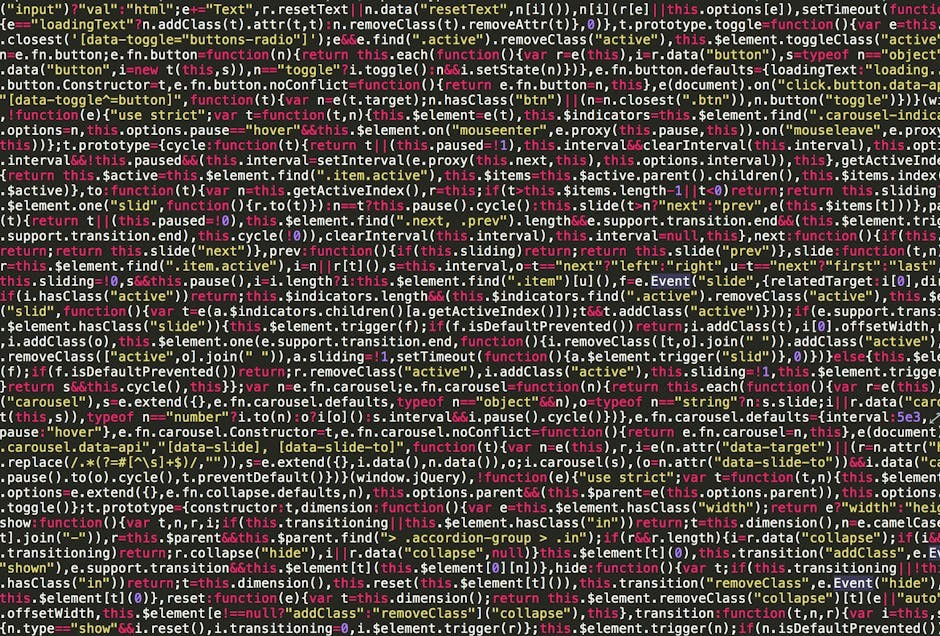CT-guided liver biopsy combines advanced imaging with precise tissue sampling, enabling accurate diagnosis of liver conditions. CPT coding ensures proper billing and reimbursement for this critical procedure.
1.1 Overview of Liver Biopsy Procedures
A liver biopsy is a medical procedure where a small tissue sample is extracted from the liver for diagnostic or therapeutic purposes; It is commonly used to assess liver damage, detect diseases like hepatitis or cancer, and monitor treatment effectiveness. The procedure can be performed percutaneously (through the skin), transvenously (via a vein), or laparoscopically. Imaging guidance, such as CT or ultrasound, is often employed to ensure precision and minimize complications. CT-guided biopsies are particularly advantageous for targeting specific lesions or areas difficult to access. Proper patient selection, preparation, and post-procedure care are critical to ensure safety and accuracy. This procedure plays a vital role in liver disease management and diagnosis.
1.2 Importance of CPT Coding in Medical Billing
CPT (Current Procedural Terminology) codes are essential for standardized reporting of medical procedures, ensuring accurate billing and reimbursement. They provide a uniform language for describing services, facilitating efficient communication between healthcare providers and payers. Accurate CPT coding ensures that procedures like CT-guided liver biopsies are billed correctly, minimizing claim denials and audits. Proper coding also ensures compliance with regulatory requirements, reducing legal and financial risks. Additionally, CPT codes help track patient care and outcomes, supporting quality improvement initiatives. Inaccurate or incomplete coding can lead to delayed payments or revenue loss, emphasizing the need for precise and knowledgeable coding practices in medical billing processes.
Understanding CT-Guided Liver Biopsy
CT-guided liver biopsy uses advanced imaging to precisely locate liver tissue for sampling, enhancing diagnostic accuracy and minimizing complications through real-time visualization.
2.1 Definition and Purpose of the Procedure
A CT-guided liver biopsy is a minimally invasive medical procedure that uses computed tomography (CT) imaging to guide the insertion of a needle into the liver. The primary purpose is to obtain tissue samples for diagnosing liver diseases, infections, or cancer. The CT scan provides real-time visualization, ensuring precise targeting of the liver tissue, which enhances diagnostic accuracy and minimizes complications. This procedure is particularly useful for evaluating abnormal liver function, detecting malignancies, and monitoring disease progression. By combining imaging technology with biopsy techniques, it offers a safe and effective method for obtaining critical diagnostic information while reducing risks associated with blind or less precise biopsy methods.
2.2 How CT Guidance Enhances Accuracy
CT guidance significantly enhances the accuracy of liver biopsies by providing real-time, high-resolution imaging. This allows physicians to precisely locate the target tissue, avoiding nearby structures such as blood vessels and bile ducts. The detailed cross-sectional views enable better visualization of lesion locations, reducing the risk of sampling errors. Additionally, CT guidance minimizes blind spots, ensuring that even small or deep-seated lesions can be accurately accessed. This level of precision not only improves diagnostic yield but also reduces the likelihood of complications, making the procedure safer and more reliable compared to traditional biopsy methods without imaging guidance.

CPT Coding System Explained
CPT (Current Procedural Terminology) is a standardized system for coding medical procedures. It ensures accurate billing and insurance reimbursement by assigning specific codes to procedures like CT-guided biopsies.
3.1 What Are CPT Codes?
CPT codes are standardized numerical codes used to describe medical, surgical, and diagnostic services. They ensure uniform communication and billing across healthcare systems. Each code corresponds to a specific procedure or service, facilitating accurate billing and insurance claims. CPT codes are maintained by the American Medical Association (AMA) and updated annually to reflect advancements in medical practices. They are essential for healthcare providers to receive proper reimbursement for procedures like CT-guided liver biopsies, ensuring that billing is efficient and compliant with industry standards.
3.2 Specific CPT Codes for CT-Guided Liver Biopsy
CT-guided liver biopsy is typically reported using CPT code 49406, which includes imaging guidance for needle placement. This code encompasses the entire procedure, from imaging to tissue sampling. Additional codes may apply if other services are performed, such as separate imaging or complex patient care. Accurate coding ensures proper reimbursement and compliance with medical billing standards. Always consult the latest CPT guidelines to confirm code usage and any updates that may affect billing for this procedure.

Billing and Insurance Considerations
Billing for CT-guided liver biopsy requires accurate CPT code assignment and verification of insurance coverage. Proper documentation ensures timely reimbursement and minimizes claim denials, optimizing financial outcomes. Compliance with payer guidelines is essential for avoiding billing errors and delays.
4.1 Proper Assignment of CPT Codes
Proper assignment of CPT codes for CT-guided liver biopsy ensures accurate billing and reimbursement. Codes must reflect the procedure’s complexity, imaging guidance, and any additional services. Specific CPT codes are selected based on factors like biopsy type (e.g., needle core or fine-needle aspiration) and imaging modality. For instance, CT guidance may involve codes for radiology supervision and interpretation. Accurate code assignment also reduces billing errors and enhances compliance with payer guidelines. Clinicians and billers must stay updated on coding changes to ensure precise and efficient claims processing.
4.2 Navigating Insurance Reimbursement
Navigating insurance reimbursement for CT-guided liver biopsy requires understanding payer policies and ensuring accurate documentation. Proper CPT code assignment and clear documentation of medical necessity are critical to avoid claim denials. Insurance providers often require pre-authorization for such procedures, and coverage may vary based on the patient’s condition and policy terms. Verification of benefits before the procedure is essential to confirm reimbursement eligibility. Additionally, understanding specific coding requirements and submitting complete claims can streamline the reimbursement process. Accurate documentation of imaging guidance and biopsy details ensures compliance with insurance guidelines, reducing the likelihood of delayed or denied payments.

Role of Imaging Technology
Imaging technology, particularly CT scans, provides detailed cross-sectional views of the liver, enabling precise guidance during biopsies and improving diagnostic accuracy for patients.
5.1 CT Scan Technology Overview
CT (Computed Tomography) scan technology uses advanced X-ray systems and computer processing to produce detailed cross-sectional images of the body. It employs a narrow X-ray beam that rotates around the patient, capturing data from multiple angles; This data is then processed by sophisticated software to create high-resolution images of internal structures, such as organs, bones, and soft tissues. In the context of liver biopsy, CT scans provide exceptional clarity, allowing healthcare providers to precisely locate lesions or abnormalities. The technology enhances diagnostic accuracy and minimizes complications by enabling real-time guidance during procedures. Its versatility and speed make it a cornerstone in modern medical imaging and interventional practices.
5.2 Imaging Guidance in Biopsy Procedures
Imaging guidance is a critical component of biopsy procedures, ensuring precision and safety. In CT-guided liver biopsies, real-time imaging allows practitioners to accurately target specific areas. The CT scanner generates detailed images, helping to avoid vital structures and minimize complications. This technology enhances the accuracy of tissue sampling, leading to reliable diagnostic results. The use of imaging guidance also reduces procedure time and patient discomfort. By providing clear visualization, CT technology plays a pivotal role in optimizing biopsy outcomes and improving patient care. Its integration into biopsy procedures underscores the importance of advanced imaging in modern medicine. Accurate targeting ensures effective diagnosis and treatment planning.

Clinical Applications of CT-Guided Biopsy
CT-guided liver biopsy aids in diagnosing liver diseases, monitoring progression, and planning treatments. It ensures precise tissue sampling for accurate diagnosis, enhancing patient care and outcomes effectively.
6.1 Diagnostic Uses of Liver Biopsy
Liver biopsy is a critical diagnostic tool for identifying liver diseases, such as cancer, cirrhosis, and hepatitis. Using CT guidance, physicians obtain precise tissue samples, enabling accurate diagnoses; This procedure helps assess liver damage extent, detect malignancies, and monitor chronic conditions like fibrosis. The detailed imaging provided by CT ensures safe and accurate needle placement, minimizing risks. It is particularly valuable for evaluating abnormal liver function tests or suspicious lesions detected on prior imaging. By providing histopathological confirmation, CT-guided liver biopsy plays a pivotal role in personalized treatment planning and management of liver-related illnesses.
6.2 Monitoring Disease Progression
CT-guided liver biopsy is essential for monitoring chronic liver conditions, such as cirrhosis and hepatitis. Regular biopsies help track disease progression, enabling timely adjustments to treatment plans. This procedure allows healthcare providers to assess fibrosis stages, detect potential complications, and evaluate the effectiveness of therapies. By providing detailed tissue analysis, CT-guided biopsies ensure accurate monitoring of liver health over time. This longitudinal data is crucial for managing patients with chronic liver diseases, preventing complications, and improving long-term outcomes.
6;3 Biopsy Alternatives and Comparisons
While CT-guided liver biopsy is highly effective, alternatives like ultrasound-guided and transjugular biopsies are also used. Ultrasound-guided biopsies are less invasive but may lack the precision of CT for deeper lesions. Transjugular biopsies are preferred for patients with coagulopathy or ascites, minimizing bleeding risks. Magnetic resonance-guided biopsies offer excellent tissue contrast but are less common due to higher costs. Each method has unique advantages, with CT-guided biopsies excelling in accuracy for complex cases. Comparisons highlight CT’s superior imaging for hard-to-reach lesions, though it involves higher radiation exposure. Choosing the best approach depends on patient-specific factors and clinical requirements.

Preparation and Patient Care
Proper preparation includes fasting, avoiding medications, and following specific guidelines. Post-procedure, patients are monitored for complications, ensuring safety and optimal recovery.
7.1 Patient Preparation Guidelines
Patients must fast for several hours before the procedure and avoid medications like blood thinners. They should inform their healthcare provider about any allergies or medications. Clothing without metal fasteners is recommended, and jewelry should be removed. Patients are advised to arrive early and arrange for a ride home. Guidelines may include avoiding alcohol and following specific dietary instructions. Adherence to these instructions ensures safety and optimal outcomes during the CT-guided liver biopsy.
7.2 Post-Procedure Care and Monitoring
After the biopsy, patients are monitored for several hours to check for complications like bleeding or pain. They must rest and avoid strenuous activities for 24-48 hours. Patients should report any unusual symptoms, such as severe pain, dizziness, or heavy bleeding, immediately. Follow-up appointments are scheduled to review biopsy results and ensure recovery. Proper wound care is essential to prevent infection. Clear instructions are provided for resuming normal activities and medications. Monitoring ensures patient safety and promotes a smooth recovery process following the CT-guided liver biopsy.

CPT Coding Process Overview
CPT coding involves selecting accurate codes for procedures like CT-guided liver biopsies. Proper documentation and adherence to guidelines ensure compliance and prevent billing errors.
8.1 Steps Involved in Coding
Coding for CT-guided liver biopsies begins with identifying the procedure’s CPT code, such as 49406, which covers imaging guidance. Next, verify the patient’s insurance and ensure the code is accurately entered into billing systems. Documentation must include details like the biopsy’s complexity and any additional imaging performed. Finally, cross-check with coding manuals to confirm compliance and avoid errors. This structured approach ensures accurate reimbursement and adherence to medical billing standards, making the process efficient and reliable for healthcare providers.
8.2 Coding Guidelines and Compliance
Adhering to coding guidelines ensures accuracy and compliance when billing for CT-guided liver biopsies. Always use the most current CPT codes, such as 49406, and verify payer-specific requirements. Accurate code selection must align with the procedure performed, including any additional imaging or guidance. Modifiers may be necessary to provide additional context. Documentation must clearly support the codes billed, detailing the complexity of the procedure and any complications encountered. Regular updates to coding manuals and payer policies are essential to maintain compliance. Non-compliance can result in denied claims or audits, highlighting the importance of precise and ethical coding practices in medical billing.

Importance of Accurate Coding
Accurate coding is crucial for proper billing and reimbursement, reducing errors and ensuring compliance with medical guidelines. It also aids in tracking the medical necessity of procedures like CT-guided liver biopsies.
9.1 Reducing Billing Errors
Accurate CPT coding is essential for minimizing billing errors, ensuring timely reimbursement, and avoiding claim denials. Incorrect or incomplete coding can lead to delayed payments or audits. By assigning the correct CPT codes for CT-guided liver biopsies, such as 49185 for the biopsy and 77012 for imaging guidance, healthcare providers reduce administrative burdens. Regular updates to coding guidelines and staff training further mitigate errors. Proper documentation of medical necessity and procedure details is critical. Compliance with payer-specific rules also prevents billing discrepancies. Accurate coding ensures that healthcare facilities maintain financial stability while delivering high-quality patient care. It streamlines the billing process and enhances overall operational efficiency.
9.2 Ensuring Proper Reimbursement
Accurate CPT coding is vital for ensuring proper reimbursement for CT-guided liver biopsies. Correct code assignment, such as 77012 for imaging guidance, ensures that healthcare providers receive fair compensation. Verifying codes with payer guidelines and documentation is crucial. Proper reimbursement also depends on adherence to medical necessity criteria and precise reporting of procedure details. Coding compliance reduces denied claims and accelerates payment processes. Regular updates to coding standards and payer policies should be monitored to maintain accurate billing practices. This ensures that healthcare providers are reimbursed appropriately for their services, supporting sustainable patient care and operational efficiency. Accurate coding practices are essential for maintaining financial integrity in medical billing.
CT-guided liver biopsy is a critical diagnostic tool, with accurate CPT coding ensuring proper reimbursement and effective patient care. This procedure’s precision and coding compliance are essential for modern healthcare.
10.1 Summary of Key Points
CT-guided liver biopsy is a precise diagnostic method combining imaging technology with tissue sampling, enhancing accuracy and reducing risks. The procedure leverages CT scans to visualize liver tissue, enabling targeted biopsies. CPT coding is essential for accurate billing and reimbursement, ensuring compliance with medical billing standards. Proper coding helps avoid claim denials and ensures fair compensation for healthcare providers. The integration of CT guidance improves diagnostic outcomes, making it a valuable tool in hepatology. This approach also supports monitoring liver disease progression and evaluating treatment responses. By adhering to coding guidelines, healthcare facilities maintain operational efficiency and patient trust, ensuring high-quality care delivery.
10.2 Future of CPT Coding in Medical Procedures
The future of CPT coding in medical procedures, including CT-guided liver biopsy, lies in enhanced precision and automation. Advances in technology, such as AI-driven coding tools, will streamline the billing process, reducing errors and improving efficiency. As medical imaging evolves, new CPT codes will likely emerge to reflect innovative techniques and procedures. The integration of electronic health records (EHRs) with coding systems will further simplify reimbursement processes. Additionally, there may be a shift toward value-based coding, aligning reimbursements with patient outcomes. Regular updates to coding guidelines will ensure compliance with advancing medical practices, making CPT coding more adaptable and patient-centric in the years to come.
References and Further Reading
For detailed insights, refer to medical coding manuals, peer-reviewed journals, and official AMA guidelines. Visit RadiologyInfo.org and PubMed.gov for comprehensive resources on CT-guided procedures and CPT updates.
11.1 Relevant Medical Resources
Key resources for understanding CT-guided liver biopsy and CPT coding include medical imaging websites like RadiologyInfo.org and PubMed.gov. These platforms provide detailed explanations of CT technology and biopsy techniques. The American Medical Association (AMA) offers official CPT coding guidelines, essential for accurate billing. Additionally, peer-reviewed journals and professional societies, such as the American College of Radiology (ACR), publish updates on imaging procedures and coding best practices. For specific CPT codes, referring to the latest AMA CPT manuals or online databases is recommended. These resources ensure clinicians and coders stay informed about advancements in CT-guided interventions and compliance with billing standards.
11.2 Coding Manuals and Guidelines
For accurate coding of CT-guided liver biopsy procedures, consult the AMA CPT Professional Edition manual, which provides detailed CPT codes and instructions. The American College of Radiology (ACR) offers coding guidelines and updates through their ACR Appropriateness Criteria. Additionally, the Centers for Medicare & Medicaid Services (CMS) publish resources on proper coding practices for imaging-guided biopsies. The ICD-10-CM Coding Guidelines are also essential for assigning accurate diagnostic codes. Regularly reviewing these manuals ensures compliance with billing standards and avoids reimbursement issues. Online platforms like AMA CPT Assistant offer additional insights and updates on coding best practices.
